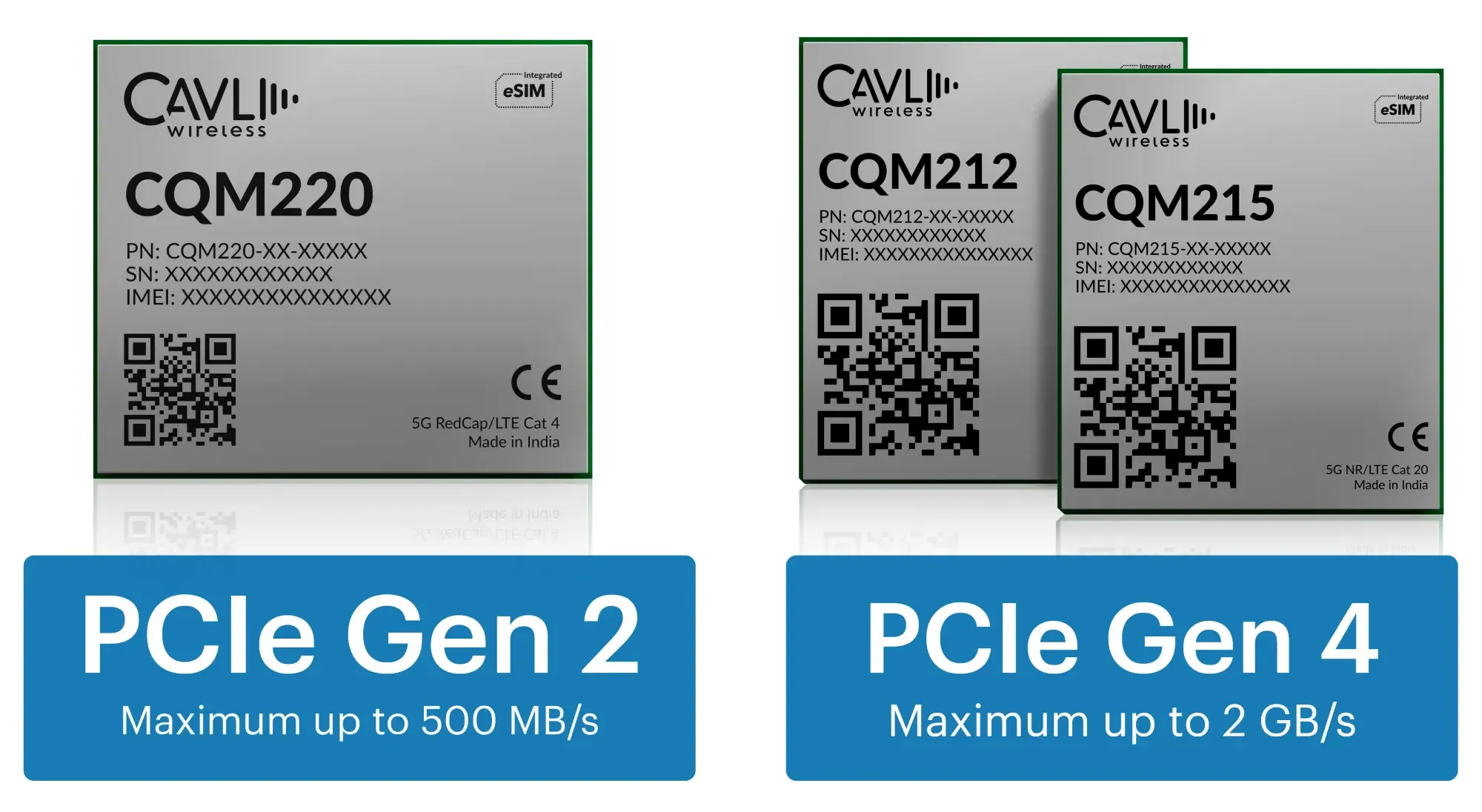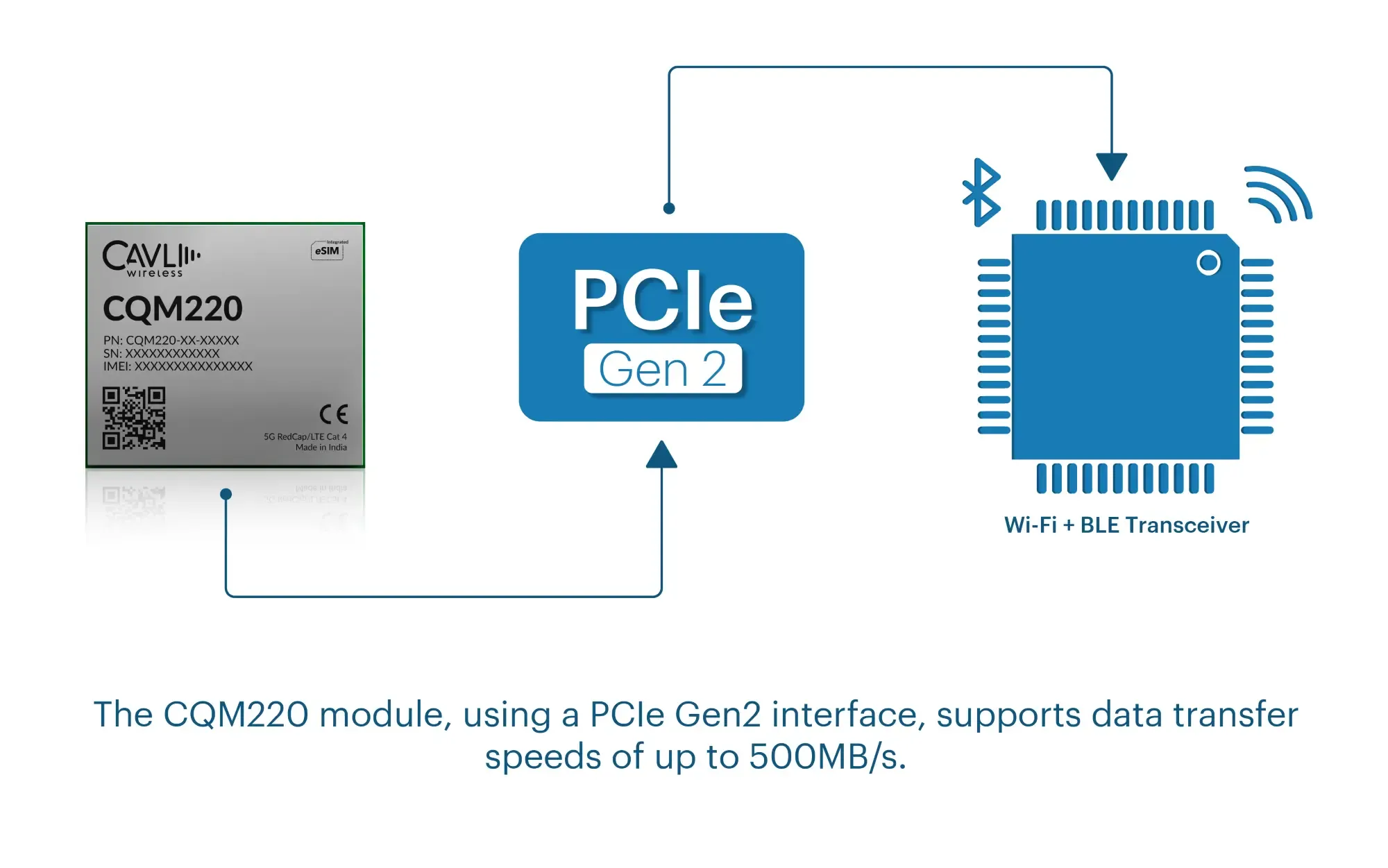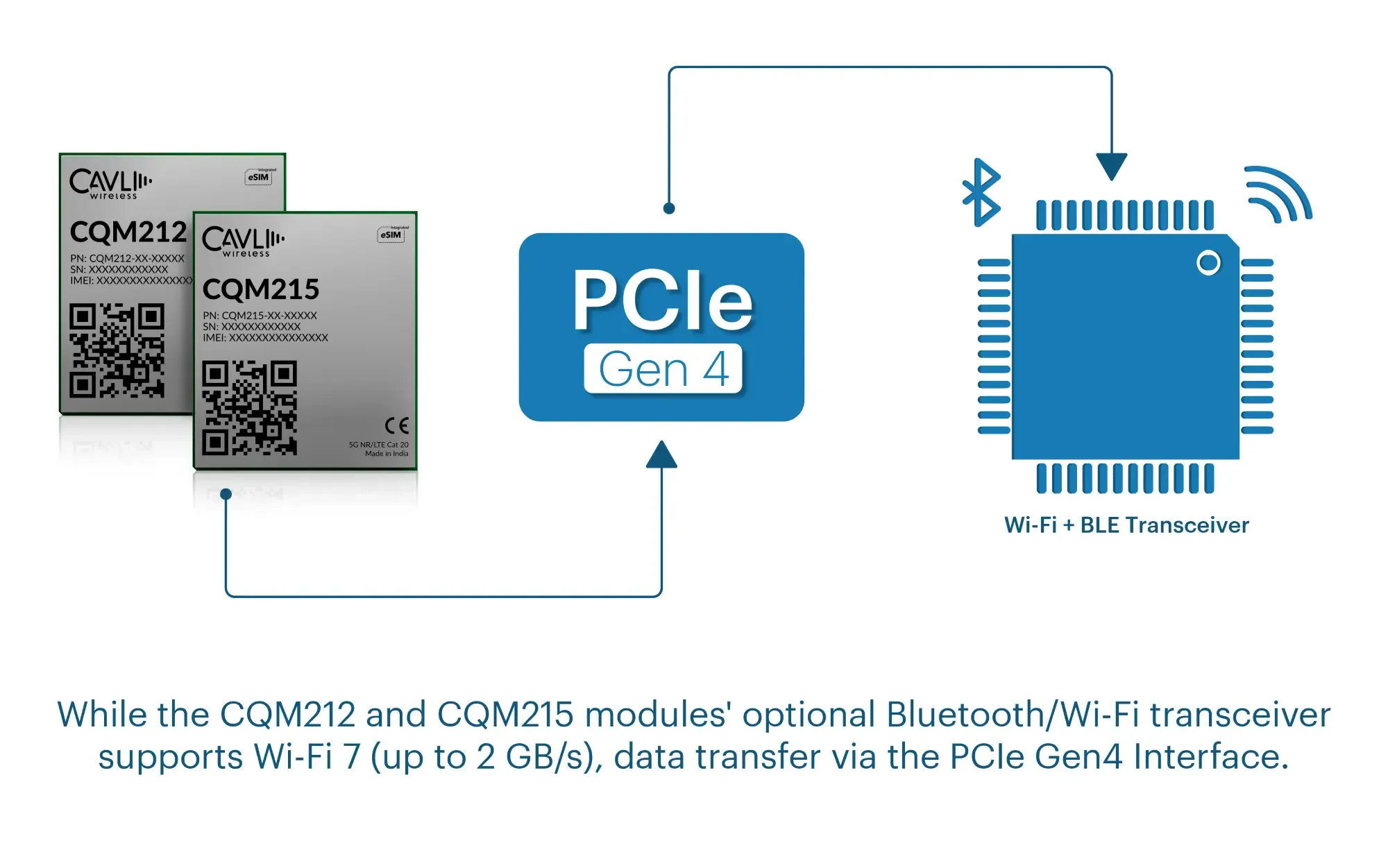In the rapidly evolving landscape of IoT, ensuring that our connected devices have the right level of performance and connectivity is critical. Whether we’re building advanced vehicle telematics systems, industrial gateways, or next-gen smart surveillance solutions, choosing the right connectivity module is essential to optimize both cost and performance. In this blog, we’ll dive deep into the connectivity options offered by Cavli’s CQM220, CQM212, and CQM215 modules, highlighting their key differences and implications for various IoT applications.
The Challenge for OEMs: Selecting the Right Connectivity Solution
OEMs often face the challenge of choosing a connectivity module that strikes the right balance between performance and cost efficiency. While high-bandwidth solutions are essential for data-intensive applications like video streaming or real-time analytics, many IoT applications, such as asset tracking or remote sensor monitoring, do not require extreme throughput. Selecting a module with the right interface and bandwidth capabilities can help streamline development and lower overall costs.
With that lens, let’s compare the performance and application scenarios of CQM220, CQM212, and CQM215, all designed to meet varying requirements of IoT deployments.
Introducing Cavli’s 5G Modules: CQM220, CQM212, and CQM215
The CQM220 is Cavli’s 5G RedCap IoT module, engineered for high-throughput connectivity and low-latency performance. The module offers key features such as 5G RedCap with LTE Cat 4 fallback, In-built GNSS with L1+L5 support, OpenWrt OS, Wi-Fi 5 & Bluetooth 5.0 connectivity via an external transceiver. These features make it an ideal choice for high-precision applications like asset tracking and autonomous vehicles, as well as a wide range of industrial and commercial use cases, including smart wearables, remote monitoring, fleet management and other critical applications requiring high-throughput but are constrained by cost or battery life.
On the other hand the CQM212 and CQM215 are Cavli's premier 5G NR modules, designed for ultra-high-throughput connectivity and low-latency performance. These modules are is designed with key features such as 5G NR with LTE Cat 20 fallback, In-built GNSS with L1+L5 support powered by Qualcomm Location Suite Gen9 V6, OpenWrt / Linux OS and Wi-Fi 5 & Bluetooth 5.0 connectivity via an external transceiver. These features make it an ideal choice for high-throughput applications like Customer Premise Equipment, High Resolution Live Streaming and Low-Latency Communication for Critical Asset Monitoring.
CQM220 vs. CQM212 and CQM215 Interface Capabilities
The CQM220 and CQM212/CQM215 modules differ significantly in terms of interface capabilities. The CQM220 utilizes PCIe Gen2 (1x lane) for wireless peripheral connectivity, offering speeds of up to 500 Mbps. This is ideal for IoT applications that require reliable connectivity but not necessarily ultra-high throughput. The PCIe Gen2 interface on the CQM220 ensures a good balance between performance and cost, which is why it is often chosen for smaller-scale IoT deployments or systems with moderate data transfer needs.
In contrast, the CQM212 and CQM215 utilize PCIe Gen4 (1x lane) and PCIe Gen3 (2x lane) interfaces, respectively, allowing them to reach speeds of up to 2,000 Mbps. This makes them an ideal choice for applications like HD video streaming, edge computing, and real-time data analytics, where high-speed connectivity and minimal latency are crucial. The use of PCIe Gen4 and PCIe Gen3 interfaces enables CQM212 and CQM215 modules to eliminate bottlenecks, ensuring a seamless data flow even in demanding environments.
Engineering Implications for OEMs
When it comes to engineering and integration, selecting the right module depends on the data transfer requirements and the nature of the application. For instance, an OEM developing a smart security system with high-definition video streaming capabilities will likely choose the CQM212 or CQM215, as these modules can handle large data streams with ease. The CQM212’s PCIe Gen3 and Gen4 interfaces provide high-speed data transfer, ensuring smooth and uninterrupted video streaming, a critical requirement for monitoring and security applications. With their superior throughput, these modules can support multiple cameras and high-quality video feeds simultaneously, making them ideal for remote surveillance systems.

On the other hand, for an OEM developing an industrial gateway to collect and transmit sensor data from factory machinery, the CQM220 module may be a more practical choice. While its bandwidth is limited to 500 Mbps, it is still sufficient for transmitting sensor data, which typically doesn’t require high throughput. The CQM220 offers a balanced solution that allows OEMs to keep costs low without compromising essential functionality, making it well-suited for monitoring and predictive maintenance in industrial environments.
Seamless Connectivity vs. Cost Optimization for End Users
For end users, the choice between CQM220 and CQM212/ CQM215 comes down to their specific needs and application requirements. For instance, imagine a farmer using a smart irrigation system with a network of sensors that collect data on soil moisture and temperature. This data is then transmitted to a central gateway powered by the CQM220 module. The CQM220's 500 Mbps bandwidth is more than sufficient for transmitting the relatively small data packets generated by the sensors. The CQM220 offers a cost-effective solution while still ensuring reliable connectivity for irrigation management, water conservation, and optimized crop yields. The farmer benefits from the performance of the CQM220 without experiencing any significant bottlenecks in the system’s connectivity.


On the other hand, consider an industrial security/surveillance system powered by the CQM212 or CQM215, where users expect real-time video streaming to their mobile devices, even when remotely accessing multiple cameras simultaneously. The CQM212’s PCIe Gen3 or CQM215’s PCIe Gen4 interface ensures smooth and uninterrupted streaming, providing enhanced security and peace of mind for end users. In this case, the premium paid for the higher-performing modules translates directly to tangible benefits, such as high-definition video quality and real-time surveillance, justifying the additional investment.
Closing Notes
Ultimately, there is no one-size-fits-all solution when it comes to IoT connectivity. Cavli's CQM220, CQM212, and CQM215 modules provide OEMs with a range of options tailored to their specific needs, whether those needs involve moderate throughput or high-speed, low-latency connectivity. Understanding the bandwidth and performance requirements of an application, and balancing those needs with budget considerations, is crucial to choosing the right module. With Cavli’s solutions, OEMs can build reliable, scalable, and flexible connected systems that cater to the diverse and evolving needs of the IoT landscape.


